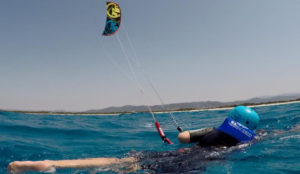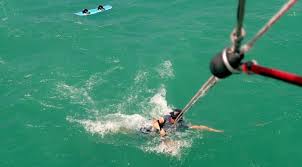Losing your kiteboard is one of the most common things that can happen to anyone when it comes to kiteboarding. Throughout the entire kiteboarding journey, it is almost a guaranteed case that you will lose your kiteboard more than once. And when that happens, it can be very perplexing for most, especially when you are still a beginner or you are totally new to the sport. And when you lose your composure, you might have a very rough time out at sea.
We believe that to resolve this, you will need to have two different sets of skills. One of them is how to take precaution to prevent yourself from losing the kiteboard, and the other is the recovery process that you will need to undertake to retrieve your kiteboard in the safest manner ever.
Taking Precaution To Prevent Yourself From Losing Kiteboard
 Of course, to prevent yourself from losing the kiteboard, you should always take precaution to reduce the probability of the event happening, right?
Of course, to prevent yourself from losing the kiteboard, you should always take precaution to reduce the probability of the event happening, right?
There are essentially two steps to this. The first step is to ensure that the boots are properly strapped to the kiteboard itself. Make sure the straps are tightly secured. The second step that you can take is to tie the kiteboard to your ankle. In this way, even if the straps do come off, the kiteboard will still be close to you.
Steps To Recover Kiteboard
 Of course, what happens if the board slips from your foot straps and away from you? That’s ugly, isn’t it? Remember, I just spoke about the recovery process? One of the best recovery processes is actually called the upwind body dragging. When to comes to retrieving of your kiteboard, this is considered the most important skill ever. Let us take a deeper look into the steps when it comes to an upwind body dragging.
Of course, what happens if the board slips from your foot straps and away from you? That’s ugly, isn’t it? Remember, I just spoke about the recovery process? One of the best recovery processes is actually called the upwind body dragging. When to comes to retrieving of your kiteboard, this is considered the most important skill ever. Let us take a deeper look into the steps when it comes to an upwind body dragging.
Steps To Perform An Upwind Body Dragging
Before we begin with the steps, the basic rule is to master this skill before you actually need it. Being prepared for any such situation is an advantage you never want to lose.
- Avoid looking in the direction of the sun and start locating your kiteboard.
- Great, you got to see your board. Now what? Use hand pointing as the key of direction while moving towards it.
- Use the other hand to control the kite, keeping it at an angle of 45 degrees. This helps in the upwind of the kite.
- At the same time, you need to align you body and the lines in an angle of 45 degrees to the kite. This improves the upwind performance and dragging. This process helps you to maintain an upwind course.
- Avoid going in the direction which faces the kite as the waves can hit hard on your face, causing distraction and injury.
- It is totally possible that you will not succeed during the first attempt. So, the next time, try to make a turn.
- Be careful, slowly divert the kite to twelve, over to the other side.
- With the above step, change your hands, so that the keel hand can point to the direction you are moving while the other hand controls and steers the kite.
- Keep continuing this process on a repeat till you reach your board.
- Approach the board from behind. This will prevent you from being injured when the board hits you.
- Time to slow down. Get the kiteboard to your twelve O’clock direction as you get closer to it.
- Grab your board and be swift to turn it in the right way.
- Slip your feet onto to and you are ready for a relaunch.
Of course, other than the above-mentioned methods, kiteboards that are brightly covered will have a better chance of being found.
Conclusion
Reminding again to practice these steps until you get mastery as you will never know when you need them suddenly. Upwind body dragging not only helps you to recover your lost board but also makes you efficient to help a fellow rider in crisis. Also, it’s a trick which you can use to get a quick water start, in case of a sudden wave break.

